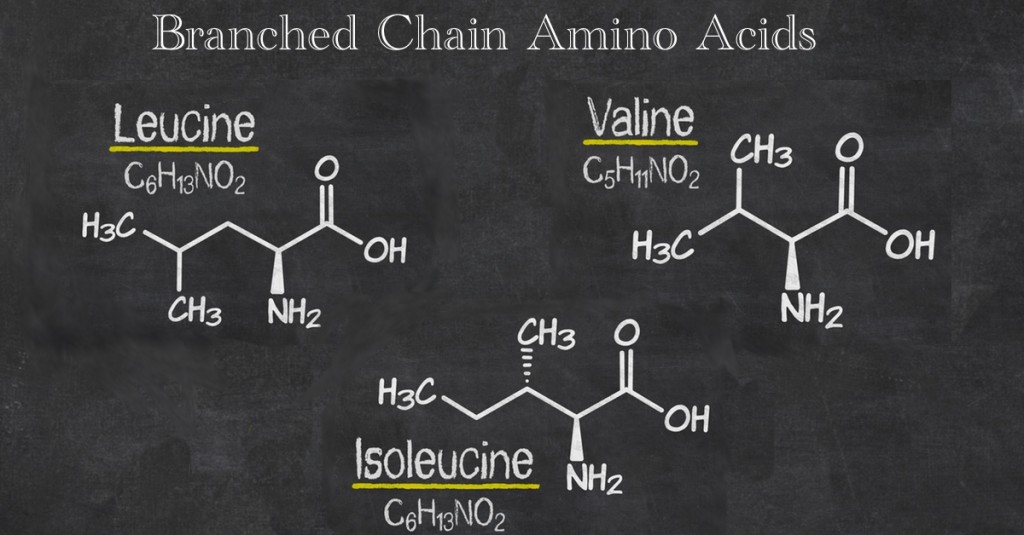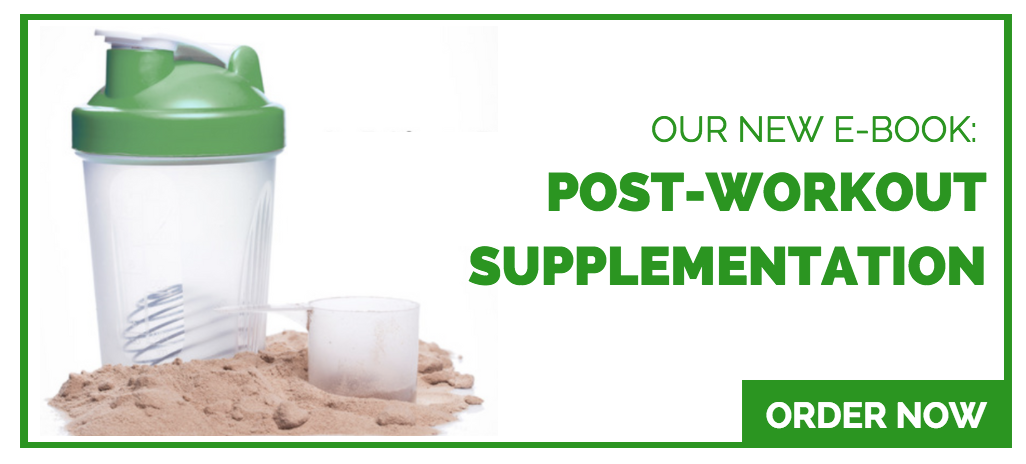Should You Be Taking Branched Chain Amino Acids (BCAAs)?
Written by Calvin Sun
For several years now, BCAAs have been a hot topic amongst athletes, strength coaches, and fitness professionals. There are a variety of benefits associated with BCAAs including increased lean muscle mass, improved recovery time, and increased strength. Many of you have asked about the function and efficacy of BCAAs as well as recommend dosages for optimal results. The purpose of today’s post is to answer some of these common questions and provide you with enough information to decide whether or not BCAAs should be included in your supplement regimen.
What Exactly Are BCAAs?
There are 22 standard amino acids that are necessary for nearly every biological process in your body. Among those, 9 are considered to be essential amino acids. Essential amino acids can’t be manufactured by the human body so they must be obtained from food sources. Among the essential amino acids, only 3 are considered to be BCAAs: leucine, isoleucine, and valine. BCAAs play numerous key roles in your body. Unlike the other essential amino acids, BCAAs are oxidized in muscle tissue and not the liver [1]. Research has found that exercise increases BCAA oxidation, likely as part of energy expenditure and as substrates for the Krebs cycle [2]. Knowing that BCAAs are oxidized during exercise, further research has been conducted to see the effects of supplementation.
What Does The Research Suggest?
A study published in the Journal of Sports Medicine and Physical Fitness found that BCAA supplementation reduced the serum levels of creatine phosphokinase (CPK) and lactate dehydrogenase (LDH) in test subjects [3]. CPK and LDH are commonly used in medical testing as indicators of muscle damage and tissue breakdown. Lower levels of these two enzymes suggest that BCAAs reduce the amount of exercise-induced muscle damage in the human body. Compared to the control group, the study found that the BCAA supplementation group had significantly decreased indicators of muscle damage for up to 5 days after the bout of exercise. Another study published in the American Journal of Physiology found that BCAAs prevented muscle protein breakdown by sparing essential amino acids in muscle tissue [4]. In other words, BCAA supplementation likely improves recovery time by diminishing the amount of damage caused during exercise. This is especially useful for athletes who are in the middle of high volume training cycles or during competition season. The protein sparing effects of BCAAs can allow us to train harder and more frequently while allowing for greater recovery and adaptation.
Of the three BCAAs, leucine is unique in that it initiates protein synthesis. During exercise, protein synthesis decreases as a result of the increased protein degradation and BCAA oxidation. Leucine has been found to stimulate muscle protein synthesis post-exercise [5]. Combined with the aforementioned benefits of all the BCAAs, leucine can help an athlete increase their lean muscle mass. Based on this research, athletes that are trying to cut weight while preserving muscle mass can benefit from supplementation as well those who are trying to increase their lean mass and strength.
Who Should Take BCAAs?
If you are a casual exerciser and your goals are mostly focused around general health and fitness, you probably don’t need to be take taking BCAAs. Just make sure you are eating an adequate amount of protein in your diet from whole food sources. If you are trying to lose fat while preserving lean muscle mass, or training with performance and competition-focused goals in mind, you should definitely consider adding BCAAs to your supplement regimen to help you recover from your high volume of training.
How Much Should I Take?
In the research I’ve cited for this article, subjects supplemented as little as 3 grams a day and as much as 50 grams a day with positive results. Many factors will affect how much you need. Your goals, body mass, age, gender, training experience, and sport are amongst the variables to consider. I recommend starting with 10-15 grams a day and adjust from there to see what works best for you.
What’s The Best Form of BCAAs?
There doesn’t appear to be a huge difference in terms of efficacy in using BCAA capsules compared to a BCAA powder dissolved in liquid. However, I recommend taking a powder mixed in liquid simply because it’s more convenient to get an adequate amount of BCAAs. Depending on what brand you’re looking at, you’ll have to swallow 4-8 capsules to get the equivalent amount of BCAAs you would find in a single scoop of a quality BCAA powder.
When Is The Best Time To Take BCAAs?
Taking BCAAs around the time of day that you train seems to be ideal. The type of training session may dictate how you want to take your BCAAs as well. If you have a longer lifting session, you can sip on a shaker bottle of BCAAs throughout your workout. However, if you are getting ready to do an intense conditioning piece, it’s probably best to take your BCAAs 15-30 minutes pre-workout or immediately post-workout. Also, if you are training first thing in the morning on a empty stomach, consider taking BCAAs 15-30 minutes prior to training.
Are BCAAs Safe?
BCAAs compose 35% of the essential amino acids in muscle proteins and 40% of the preformed amino acids required by mammals. While BCAAs and their byproducts can reach toxic levels in the human body in rare cases such as certain metabolic disorders, it’s very difficult to achieve a toxic level in a normal, healthy person. In fact, BCAAs have been used in the treatment of burn victims [6] as well as liver diseases [7].
Is It Legal?
BCAAs are considered a dietary supplement and perfectly legal to buy. The only concern would be if your sporting organization considers them a banned substance. As far as I know, the World Anti-Doping Agency and the NCAA both allow the use of BCAAs. Though, be sure to check with your respective organization if you aren’t sure.
Do You Have Any Brands of BCAAs You Recommend?
I like Modern BCAA by USP Labs. Two scoops gives you 15 grams of BCAA and it has a very good ratio of leucine. Also, it’s pretty affordable at 89 cents per 15 gram serving. Click here to purchase from Amazon.
Based on the research as well as my own experience as a coach and athlete, BCAAs are a worthwhile supplement to consider if you are trying lose fat while preserving muscle, training for a competition, or if you’re more focused on performance-based goals such as chasing PRs.
However, if your goals are more centered on general health and fitness, BCAA supplementation probably isn’t necessary in most cases. You will find BCAAs in quality protein sources such as eggs, chicken, fish, and other lean meats. If you still aren’t sure if you should supplement with BCAAs, consider speaking with one of our nutrition coaches to get personalized recommendations.
If you are interested in learning our other supplement-based protocols for post-workout nutrition, pre-workout, and recovery, our newest book, “Post-Workout Supplementation: An Evidence-Based Guide To Enhance Performance and Optimize Recovery” is available for sale on our website.
References:
1. Rennie, Michael J. “Protein Andand Amino Acid Metabolism during and after Exercise and the Effects of Nutrition.” Annual Review of Nutrition (2000).
2. Shimomura, Yoshiharu, Taro Murakami, Naoya Nakai, Masaru Nagasaki, and Robert A. Harris. “Exercise Promotes BCAA Catabolism: Effects of BCAA Supplementation on Skeletal Muscle during Exercise.” The Journal of Nutrition 134.6 (2004).
3. Coombes, JS, and LR McNaughton. “Effects of Branched-chain Amino Acid Supplementation on Serum Creatine Kinase and Lactate Dehydrogenase after Prolonged Exercise.” The Journal of Sports Medicine and Physical Fitness (2000).
4.MacLean, DA, TE Graham, and B. Saltin. “Branched-chain Amino Acids Augment Ammonia Metabolism While Attenuating Protein Breakdown during Exercise.” The American Journal of Physiology 6.1 (1994).
5. Layne E. Norton and Donald K. Layman. “Leucine Regulates Translation Initiation of Protein Synthesis in Skeletal Muscle after Exercise”.The Journal of Nutrition 136.2 (2006).
6. De Bandt, Jean-Pascal, and Luc Cynober. “Therapeutic Use of Branched-Chain Amino Acids in Burn, Trauma, and Sepsis.” The Journal of Nutrition 136.1 (2006).
7. Marchesini, Giulio, Rebecca Marzocchi, Marianna Noia, and Giampaolo Bianchi. “Branched-Chain Amino Acid Supplementation in Patients with Liver Diseases.” The Journal of Nutrition 135.6 (2005).7.
8. Howatson et al. Exercise-induced muscle damage is reduced in resistance-trained males by branched chain amino acids: a randomized, double-blind, placebo controlled study. Journal of the International Society of Sports Nutrition 2012, 9:20.
Also Check Out…

